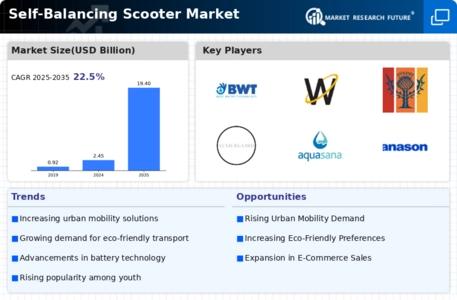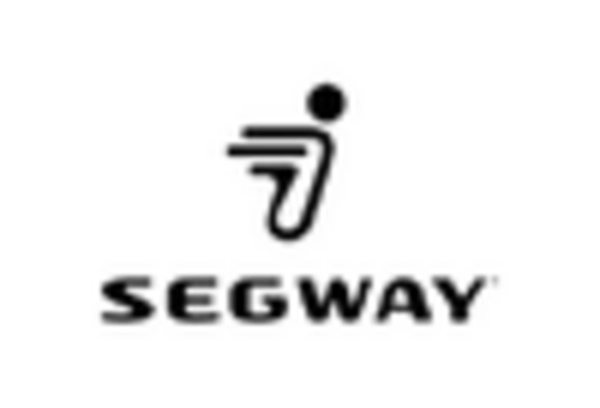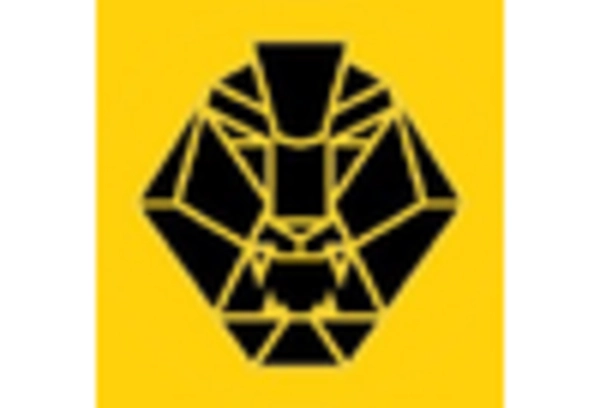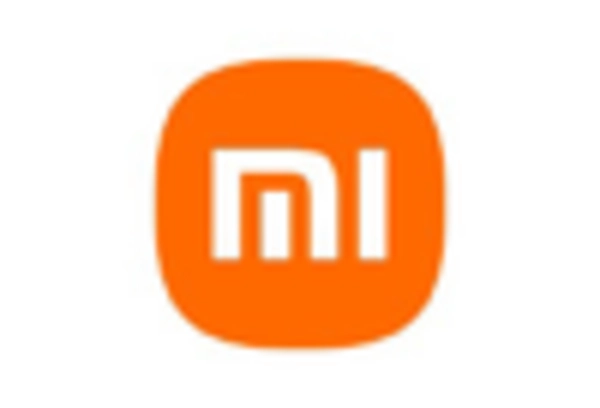Market Trends
Key Emerging Trends in the Self Balancing Scooter Market
In the rapidly expanding Self-Balancing Scooter Market, companies employ various market share positioning strategies to differentiate themselves and gain a competitive advantage in the personal mobility sector. Differentiation stands out as a prominent strategy, with companies focusing on unique features, sleek designs, and advanced technology to set their self-balancing scooters apart from competitors. By catering to specific consumer preferences, such as ease of use, innovative features, and stylish designs, companies can carve out a distinct market niche and build brand loyalty among targeted customer segments.
Cost leadership is another significant strategy in the Self-Balancing Scooter Market, emphasizing affordability without compromising on quality. Efficient manufacturing processes, sourcing cost-effective components, and achieving economies of scale enable companies to offer competitive prices, making their scooters accessible to a broader consumer base. This approach is particularly effective in markets where price sensitivity plays a crucial role in purchase decisions, allowing companies to capture a larger market share.
Innovation plays a vital role in the personal mobility industry, and companies often adopt a strategy of continuous technological advancement. This involves incorporating cutting-edge features such as Bluetooth connectivity, improved battery life, and enhanced safety mechanisms. By staying at the forefront of innovation, companies not only secure market share but also position themselves as leaders in providing reliable and high-performance self-balancing scooters, attracting consumers looking for the latest advancements in personal transportation.
Market segmentation is a key consideration in the Self-Balancing Scooter Market, where companies tailor their products to meet the specific needs of different consumer groups. For instance, they might develop lightweight and compact scooters for urban commuters or off-road models for outdoor enthusiasts. This targeted approach allows companies to address the unique requirements and preferences of diverse customer segments, solidifying their market presence and competitiveness.
Strategic partnerships and collaborations have become increasingly important in the Self-Balancing Scooter Market. Companies form alliances with distributors, retailers, and ride-sharing platforms to enhance market reach and distribution channels. Collaborative efforts can lead to shared marketing initiatives, promotional campaigns, and expanded sales networks. By aligning with strategic partners, companies position themselves to navigate market challenges effectively and tap into new consumer demographics.
Global expansion is a strategy adopted by many companies in the Self-Balancing Scooter Market to tap into emerging markets and diversify their customer base. By entering new international markets or strengthening their presence in existing ones, companies can address different transportation needs and cultural preferences. This expansion strategy requires an understanding of local regulations, infrastructure, and consumer behaviors.
Customer-centric approaches are gaining prominence as companies recognize the importance of building strong relationships with consumers. Providing excellent customer service, offering product customization options, and actively seeking feedback contribute to enhanced customer satisfaction and brand loyalty. In the Self-Balancing Scooter Market, where user experience is crucial, satisfied customers are more likely to become repeat buyers and advocates, positively influencing market share.
In conclusion, the Self-Balancing Scooter Market is shaped by a variety of market share positioning strategies that companies employ to gain a competitive edge. Whether through differentiation, cost leadership, innovation, market segmentation, strategic partnerships, global expansion, or customer-centric approaches, these strategies play a crucial role in defining the industry landscape. As the demand for convenient and eco-friendly personal mobility solutions continues to rise, companies in the Self-Balancing Scooter Market will continue to adapt their strategies to meet the evolving needs of consumers and maintain a strong presence in this dynamic market.

















Leave a Comment